The late Shang Dynasty marked the first zenith in the production of bronze wares in China’s history, where wine containers such as zun, gong and you in the shape of birds or animals appeared. The “Fu Hao” owl-shaped zun unearthed in the Yin Ruins in Anyang, the pig-shaped zun unearthed from Xiangtan (Fig. 9) and the elephant-shaped zun unearthed from Liling (Fig. 10) of Hunan Province were all designs that had never been seen before and had greatly enriched the cultural connotation of the bronze ware. However, were the wine containers in the shape of a realistic animal in a slightly exaggerating style first invented in the Shang Dynasty?
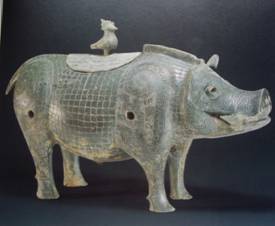
Fig.9 The pig-shaped zun unearthed from Xiangtan, Hunan Province
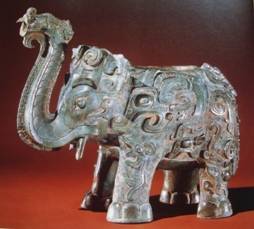
Fig.10 The elephant-shaped zun unearthed from Liling, Hunan Province
Archeological excavations reveal that it took an evolutionary process to bring images of birds and beasts that are closely related to humans into the production of utensils for daily use. The pre-historical ancestors created simple but practical utensils by imitating birds and beasts that they saw every day in their production and lives over the long course of history. As early as the mid-Neolithic Age, our ancestors in the Yellow River and Yangtze River basins had made bird-shaped pottery zun. The eagle-shaped pottery zun of the Yangshao Culture period some 6300-5600 years ago unearthed in Huaxian County of Shaanxi Province in 1958 features smartly created simplistic and unsophisticated design. The entire body looks like an eagle with a pointed and inwardly hooked beak, big, round and staring eyes, and folded wings. The tip of its tail touches the ground, forming a three-point support along with the two feet. The artistically exaggerated legs reinforce its stability. The three supporting points of the drooping tail and two feet have the similar effect as that of the “Fu Hao” owl-shaped zun. (Fig. 11)
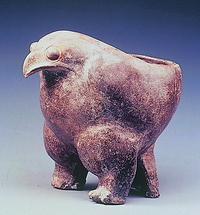
Fig. 11 The pottery eagle-shaped zun unearthed from Huaxian County, Shaanxi Province.
Animal-shaped potteries of the Neolithic Age have been unearthed in many different places across China. On the one hand, the ancient people worshipped these animals as deity. On the other hand, they mastered the artistic skills of combining both “realistic” and “exaggerated” styles. It is evident that the animal-shaped pottery sculptures represented by eagle-shaped pottery zun in the pre-historic time prelude the time of bronze wares in the shape of birds and beasts in the Shang Dynasty.
There are many kinds of bronze zun in the shape of birds and beasts that have been unearthed through archeological excavations or have been passed down through generations. For example, zun may be shaped like bird, chixiao (a family of birds), mandarin duck, duck, ox, sheep, rhino, pony, pig, elephant, tiger, rabbit, bird-head and beast body, etc. The bird or beast-shaped zun first appeared in the early Yin Ruins period and were modestly developed in the late period (Fig. 12). They were highly developed in the Western Zhou Dynasty but reduced in number and variety toward the Spring and Autumn and Warring States Periods.
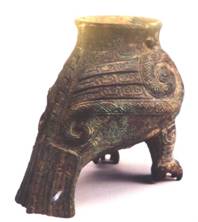
Fig. 12 Bird zun of the late Shang Dynasty, 13.8 cm in height, unearthed from Tomb 1885 in Xibeigang of Anyang, now in the collection of Institute of History and Language in Taipei
The excavation of the bird or beast-shaped bronze zun shows that normally bronze zun vessels of the same bird and animal patterns were buried in one tomb in the late Shang Dynasty. For example, a pair of “Fu Hao” owl-shaped bronze zun have been unearthed from the Fu Hao’s tomb in the Yin Ruins. Toward the middle and late Western Zhou Dynasty, bronze zun in different shapes of birds and animals were buried in the same tomb. For example, in Tomb One of Rujiazhuang in Baoji, Shaanxi Province, whose owner was Gongyu Bo of the mid-Western Zhou Dynasty, two bird-shaped bronze zun (Fig.13) and one elephant-shaped bronze zun (Fig. 14) were unearthed.
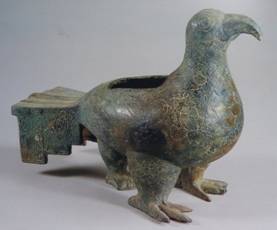
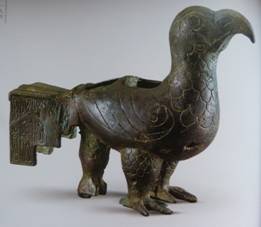
Fig. 13 Bird-shaped zun (2 pieces) of the mid-Western Zhou Dynasty, 23.5 cm and 18 cm in height respectively, unearthed from Tomb M1 in Rujiazhuang of Baoji, Shaanxi Province.
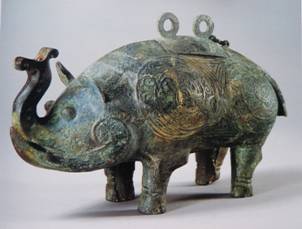
Fig. 14 The elephant-shaped bronze zun unearthed from M1 of Rujiazhuang of Baoji, Shaanxi Province
In the Spring and Autumn and Warring States Period, the bird and animal-shaped zun reduced in number and variety and the majority were bird-shaped. In the background of all vassal states competing for dominance, the emergence of a new landowner class and all schools of thoughts contending for attention, bronze wares were characterized with different styles and creative designs. As a result, the patterns and shapes of the bird or animal-shaped zun tended to display dexterous, changeable and practical features. (Fig. 15) (Fig. 16)
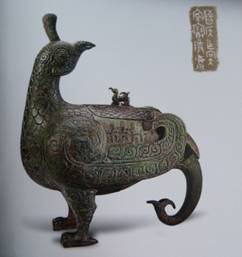
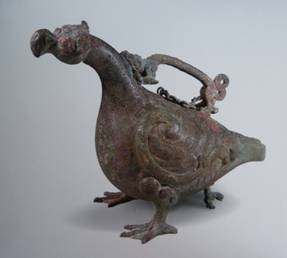
Fig.15 (left). Bird-shaped zun of the Western Zhou Dynasty unearthed from the tomb of Marquis of State of Jin in Shanxi Province
Fig.16 (right). Bird-shaped zun of the Spring and Autumn Period unearthed from the tomb of a high-ranking official Zhao in Shanxi Province
The tombs from the Shang Dynasty to the Spring and Autumn and Warring States Periods, where the bird or animal-shaped zun vessels were discovered, and the inscriptions on these vessels indicate that they were owned by the people of higher social status including the royal family members, nobles, or heads or high-ranking officials of vassal states.
Why did people make bronze wares into shapes of birds or animals in the Shang and Zhou Dynasties? Why were the bird or animal-shaped bronze zun vessels in the Shang Dynasty specifically decorated with more complicated and mysterious patterns?
Your answer please, if you have any questions or answer, please feel free to send us email, we are waiting for your answers and participation, and your comments, answers and suggestions will be highly appreciated. We will select and publicize the most appropriate answers and comments some time in the future.
Weekly Selection Email: meizhouyipin@chnmus.net
Fu Hao and the Owl
The Fu Hao’s tomb in the Yin Ruins in Anyang was excavated in 1976. The exquisite burial objects indicate that Fu Hao was of a prominent status. There are at least 170-180 oracle bone inscriptions about Fu Hao, which indicated that Fu Hao was the wife of Wuding, King of the Shang Dynasty, and she herself was an outstanding politician and military strategist who often presided over grand ritual ceremonies of the royal family. In a series of wars that Wuding launched against the surrounding states and tribes, Fu Hao was repeatedly authorized to mobilize soldiers and constantly assumed the role of a general or military officer to lead the army and had made outstanding achievements.
In Fu Hao’s tomb, other than the “Fu Hao” owl-shaped zun, the “Fu Hao” Bronze Double Fangyi was also decorated with owl patterns. (Fig. 17)
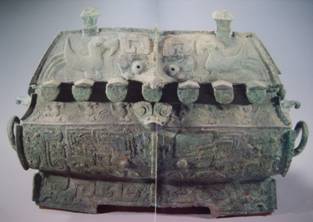
Fig. 17
There is a standing chixiao in the back of the “Fu Hao” ring-foot gong (pair) (Fig. 18).
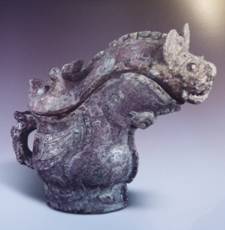
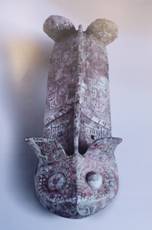
Fig. 18 The “Fu Hao” ring-foot gong and its cover
In addition, out of the 155 animal-shaped jade articles unearthed from the Fu Hao’s tomb, there are six pendants in the shape of a standing owl of various designs (Fig. 19).
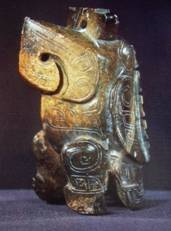
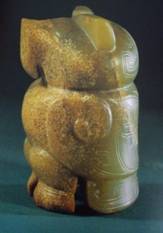
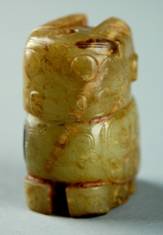
Fig.19 Owl-shaped sapphire pendant (3 pieces), 7.7 cm, 6.5 cm and 4.9 cm in height respectively, unearthed from Fu Hao’s tomb
The majority of owl-shaped bronze wares are zun or you, and most were found in the second and third phases in the Yin Ruins. The owl patterns were mostly seen on bronze wares dating from the period of the Yin Ruins but were rare or even unseen on those from the Western and Eastern Zhou Dynasties. It indicates that chixiao was very important in the ideology of the Shang people. According to Mr. Ma Chengyuan, “the image of chixiao on bronze wares of the Shang Dynasty represented the brave Deity of War that had the power of preventing destruction from wars.” The fact that there were more owl-shaped bronze and jade objects and more owl patterns on bronze wares unearthed from the Fu Hao’s tomb than vessels taking owl as the main pattern unearthed from other tombs of the Yin Ruins, which demonstrates the prominent status of Fu Hao and indicates her achievements on the battleground as well.
The social connotation of the chixiao image and the chixiao pattern
There has been disagreement in the history on the evaluation of chixiao by the people in the world. In the mainstream Western culture, owls were a symbol of wisdom. The incarnation of Athena, the Goddess of Wisdom in the Greek mythology, was an owl. However, its mysterious behavior pattern, quiet flying and frightening sounds have made owls an object of superstition and fear in many places around the world. The ancient Indians in Vancouver, Canada, created a woodcarving of an owl totem that has been retained till today. Their descendants are still dancing with the totem of an owl. In other cases, owls are treated as a symbol of death and darkness. In the plays of Shakespeare’s Julius Caesar and Macbeth, the owl’s hoot forebodes death.
This mixed feeling of eulogy and detesting, admiration and fear is also reflected in many ancient Chinese documents. Owls were also called guaichi, chihun or liuli that implied treacherousness, unfilialness, death, darkness and mystery. The Book of Songs •Chixiao has it: “O owl, O owl,/ You have taken my young ones;/ Do not destroy my nest.” This is the first records denouncing chixiao, which was a symbol of evil people. In his poem by the title of For Prince Baima Cao Biao, Cao Zhi wrote: “when chixiao tweets, you will see jackals and wolves in the road ahead.” The chixiao, jackals and wolves were metaphors of villain. When an owl grows up, it devours its mother. Therefore, it was also called the unfilial bird. As a bird of prey, owls gave an impression of bravery and dignity to our ancestors. Others worshipped it for its militancy.
The people in the Shang Dynasty did not view chixiao as an evil bird, instead, they worshipped owl as a bird with supernatural ability. Bronze owl-shaped zun and you have been often unearthed from tombs built by higher standards in the Yin Ruins in Anyang. The image of owl is often seen in patterns on bronze wares of the Shang Dynasty and owl-shaped vessels made from a variety of materials have also been unearthed. An owl-shaped bronze you has been unearthed from Tomb SM539 in Dasikong Village in the Yin Ruins (Fig. 5). The style of bronze wares unearthed from the tomb and the inscriptions on them indicate that the owner of the tomb assumed a high-ranking official position.
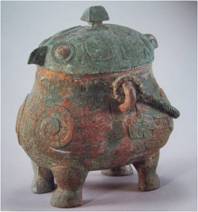
Fig. 5 The owl-shaped you of the late Shang Dynasty, unearthed from Tomb M539 south of Dasikong in Anyang in 1980, now in the collection of the Institute of Cultural Relics and Archeology of Chinese Academy of Social Sciences
The three stone owls made by round sculpture have been unearthed from the reburial tomb HPKM1001 in Houjiazhuang in the Yin Ruins. They are either standing or prostrating, the biggest one of which measures 33.6 cm in height and 25.2 cm wide at maximum (Fig. 6). The vertical straight wide groove in the back indicates that it might be used as a decorative architectural component. The M1001 in Xibeigang of Houjiazhuang is widely believed to be tomb of the kings in the Shang Dynasty.
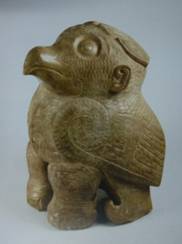
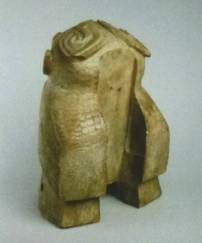
Fig.6 The side and back views of the stone owl unearthed from HPKM1001 in Houjiazhuang in the Yin Ruins of Anyang, Henan Province
In normal cases, the ogre-mask motif was mainly used to decorate the belly of the bronze jia, bronze zhi and other objects of the late Shang Dynasty. In other cases such as the zhi with the owl pattern (Fig. 7) now in the collection of the Asian Art Museum of San Francisco in the U.S., the chixiao pattern was used to replace the ogre-mask motif, indicating that the chixiao pattern and ogre-mask motif were of the same importance in the late Shang Dynasty and were both closely related to the religion at the time.
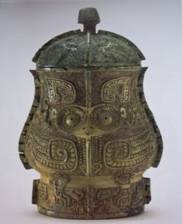
Fig. 7 Zhi with the owl pattern now in the collection of the Asian Art Museum of San Francisco in the U.S.
In the Shang Dynasty, in addition to the supreme ritual bronze wine containers that were made into owl shapes or were decorated with owl patterns, people also made jade pendants into different shapes of owls. It proves that people in the Shang Dynasty did not denounce owls, but viewed the owls as a bird with supernatural ability and therefore attached great importance to it.
The bronze making and jade carving techniques in the early Western Zhou Dynasty inherited the style of the late Shang Dynasty and the owl-shaped vessels were occasionally seen. In the mid-Western Zhou Dynasty, owe-shaped zun or owl pattern became very rare or even disappeared. In tombs of the late Warring States Period and the Qin and Han Dynasties, chixiao images or owl-shaped vessels reappeared. The examples include the chixiao patterns painted on the silk and lacquered coffins unearthed from Tomb One in Mawangdui in Changsha; a painted owl-shaped pot with a wooden body unearthed from the tomb of the Warring States Period in Qingchuan, Sichuan Province; owl-shaped pottery storehouses for storing grains are often unearthed from tombs of the Han Dynasty, with an owl-head-shaped upper part and owl-body-shaped lower part (Fig.8). As owls are natural enemies of rats, to build the pottery storehouses into the shape of owls symbolized how people valued the grain production and how they wished to have a bountiful harvest. This explains why artifacts themed on owls from the late Warring States Period and the Qin and Han Dynasties are unearthed.
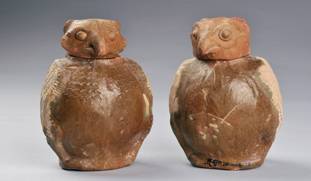
Fig.8 The pottery owl-shaped pot in red and green glaze of the Han Dynasty, 17.5 cm in height, unearthed from Sijian'gou of Zhicheng of Jiyuan, Henan Province, now in the collection of Henan Museum
The above ancient records and excavated artifacts show that the attitude of the ancient Chinese toward chixiao had changed with the times, region and nationality.
The owl-shaped zun looks like an owl with its head high and chest out (xiao, also known as chixiao, was used in ancient China to collectively name the birds that fall into the category of owl) that has small ears and a high comb, round eyes and a broad beak, and two folded wings. Its two feet and the drooping tail function as three supports. (Fig. 1) There is a handle behind its neck, an opening with a cover in the back of its head, a standing bird in the front of the cover and a dragon behind the bird. (Fig. 2) The owl-shaped zun is decorated with complex designs and its interior wall under the mouth is inscribed with the two characters of “Fu Hao”. (Fig. 3)
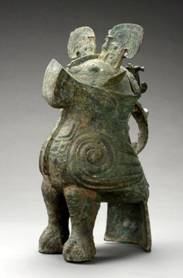
Fig. 1 A side view of “Fu Hao” owl-shaped zun
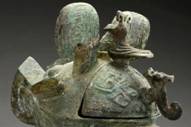
Fig. 2 The cover of the “Fu Hao” owl-shaped zun
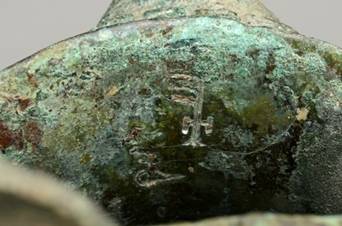
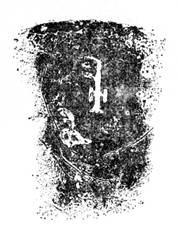
Fig. 3 The inscription on the interior wall of the “Fu Hao” owl-shaped zun
The “Fu Hao” owl-shaped zun is the earliest bird-shaped bronze zun unearthed in China so far. It was made by craftily combining the wild imagination with reasonable exaggeration to turn the theme of an animal into a useful ritual vessel, making it a rare artifact. (Fig. 4)
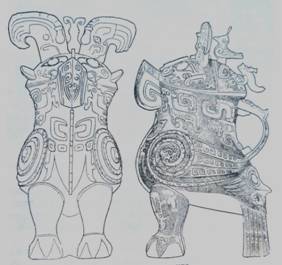
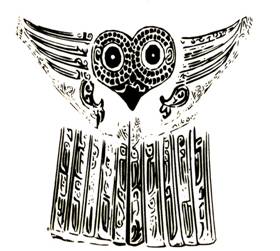
Fig. 4 Outline drawing of the “Fu Hao” owl-shaped zun
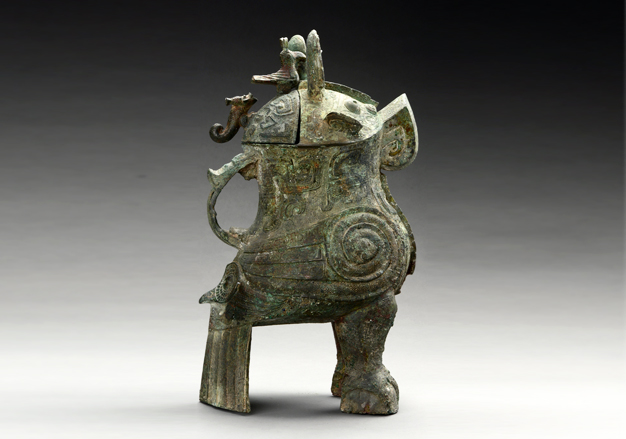

Li Qin, Director of the Exhibition Dept. of Henan Museum, dedicating to exhibition design, and research on the culture and archaeology of the Pre-Qin Period.